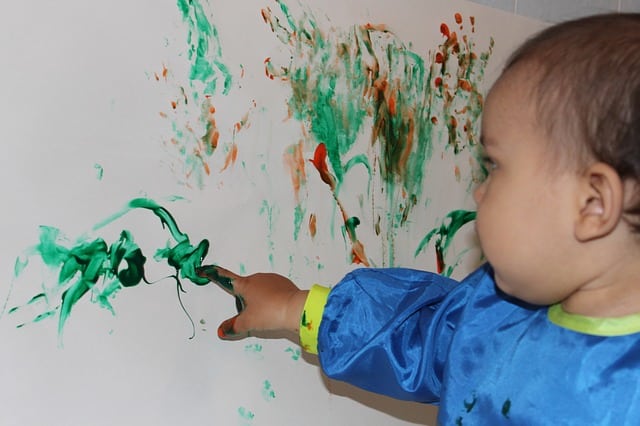
Fingerprinting generates many benefits for children.
Before delving fully into the meaning of the term fingerprint painting, let's know its etymological origin. In this case, we can state that it is a word composed of the sum of two different components:
-The Greek noun “dactyl”, which can be translated as “finger”.
-The verb “pingere” which is Latin and means “to paint”.
What is fingerprint painting?
The notion of fingerprinting is not part of the dictionary developed by the Royal Spanish Academy ( RAE ). The concept refers to the technique of painting with your fingers : that is, without using a brush or any other utensil.
Fingerprinting involves the direct manipulation of the substance that will be used to create the work . Beyond the definition that refers to the use of the fingers, this practice can also be developed with the palm or edge of the hand , with the forearms and even with the elbows . In some cases the concept also includes the use of the feet .
Likewise, it must be established that this type of painting can be done with a wide variety of materials, especially polenta paste, tempera, clay, cooked paste or even the special pastes that exist for it.

It is possible to develop fingerprint painting with various materials.
Importance in children
Many educators promote finger painting among children. The technique usually helps to break down inhibitions and promote expression, in addition to helping to improve hand control and fine motor skills.
From six months of age, a child can begin to dabble in finger painting. In the first stage, it is best to use your entire hand, staining the sheet freely. Over time, instructions can be given to the little one as an exercise.
Once the work is finished, the child will probably want to display it. The completed finger painting work can strengthen your self-esteem as it shows you that you were able to make the creation in question.
Beyond the educational purpose, finger painting is children's entertainment . It is advisable for an adult to supervise the activity and to foresee where and how the child is going to clean himself when he has finished.
Other benefits of finger painting
In addition to all the benefits that finger painting brings with it for children, we cannot overlook others that are also important, such as these:
-It helps them develop their creativity and imagination.
-Of course, it is a way for him to exploit his artistic abilities.
-It goes without saying that it is a way for them to release stress.
-It is very useful so that they can improve their coordination.
Effects of this practice
The studies carried out on fingerprinting have also served to detect a series of common behaviors of children when they come into contact with it:
-They look, smell and even touch the paint or materials they are going to work with.
-On numerous occasions, they are reluctant to stain their hands and when they decide to take the step of practicing it, they only begin to use the paint with a single finger.
-They pour the paint beyond the canvas or sheet they have been given.
It should be noted that, for adults , finger painting can also become a vehicle for expression : the technique is not exclusive to children.
